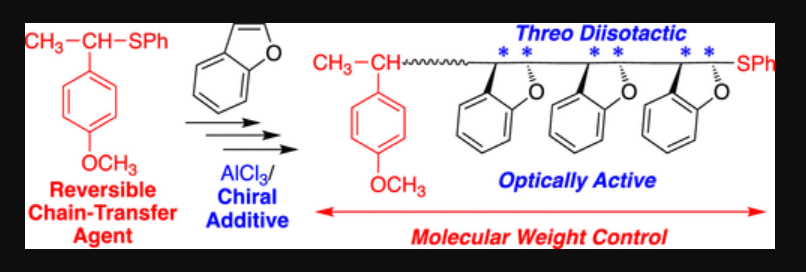A novel method for producing polymers has been created by researchers in Japan. The creation of more transparent, heat-resistant, and environmentally friendly plastics is anticipated to result from this discovery.
Asymmetric cationic polymerization, a process first used in the 1960s by the research team of Nobel laureate Giulio Natta, allowed for the creation of polymers. Their team was unable to regulate the molecular weight, though. Because it influences many of the properties of plastics, managing the molecular weight of polymers is crucial, especially those used for the engineering of plastics.
High molecular weight, stiffer-flowing polymers perform best because they are more durable and resistant to damage from chemicals and the environment.
The New Technique
A team led by Professor Kotaro Sato from the Tokyo Institute of Technology, Lecturer Mineto Uchiyama of Nagoya University’s Graduate School of Engineering, and Professors Masami Kamigaito and Masami Kamigaito have successfully created optically active polymers that have controlled molecular weight.
They combined two existing techniques-their living cationic polymerization and Natta’s asymmetric cationic polymerization-to create the combination technique of asymmetric living cationic polymerization.
With the help of this novel technique, polymers with high optical activity and controlled molecular weight can be produced. The American Chemical Society Journal published a report on their findings.
The building blocks of polymers, known as monomers, are derived from various sources. The team used benzofuran, a precursor to the polymer polybenzofuran, which can be produced from natural resources, to test out their novel technique.
With high transparency and a high glass transition temperature, benzofuran can produce rigid polymers. It can be recycled chemically as well. Due to its high glass transition temperature, the polymer can withstand extremely high temperatures without losing its rigid shape.
Benzofuran can therefore be used to make transparent thermoplastics that are sustainable.
Start of Something New
According to Lecturer Uchiyama, their novel polymerization technique allowed them to precisely control the chirality and molecular weight of polybenzofuran, producing novel optically active polymer materials that have precise structural controls.
Both the creation of novel precision polymerization reactions and the creation of novel functional polymer materials are anticipated outcomes of this research. It is anticipated that polybenzofuran will develop into a new substance as a heat-resistant resin with optical activity because it has the characteristics of highly heat-resistant plastic.
Uchiyama also sees a wide range of applications for the substance. Polystyrene, one of the primary plastics used daily for a variety of products, such as cases, plastic containers, and packaging, is structurally similar to polybenzofuran.
The molecular structure of polybenzofuran, which is not used for commercially available plastic, is stiffer and its glass transition temperature is higher than that of polystyrene.
The new substance is viewed by the team as a new plastic with advantageous thermal properties. Additionally, its distinctive optical characteristics might provide new functionalities, Science Daily reports.
Article Credits: Nature World News

Pingback: Japanese firms offer programming classes for children - SLSV - A global media & CSR consultancy network
Pingback: More Eco-Friendly Plastics on The Way Thanks to a New Combination Technique - drupa